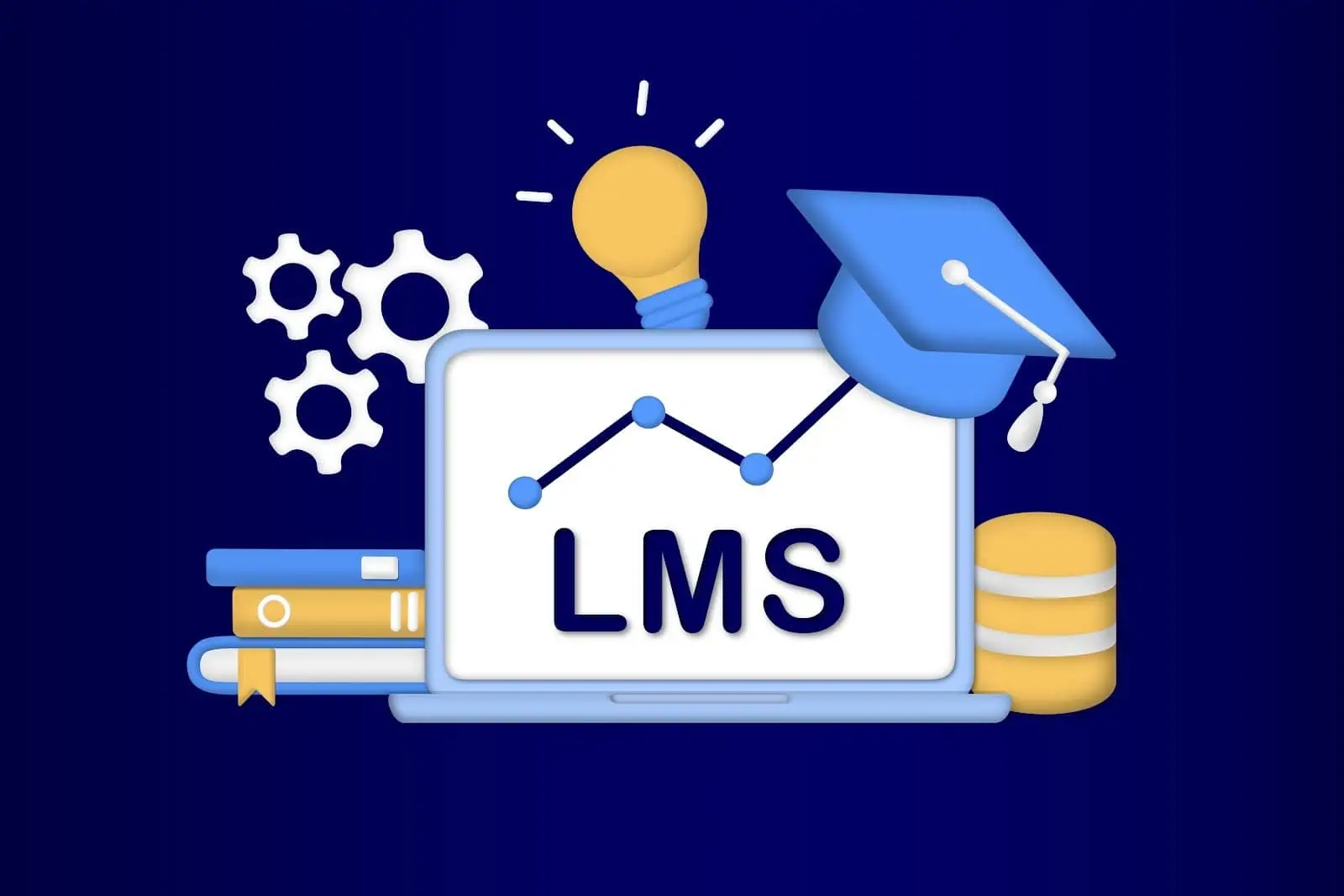LMS Meaning: What is a Learning Management System?
A LMS (Learning Management System) is a software platform designed to create, manage, deliver, and track educational courses, training programs, or learning content. It serves as a centralized system for instructors, administrators, and learners to interact with educational materials, track progress, and assess performance. LMS is commonly used by schools, universities, businesses, and other organizations to facilitate online learning and training.
Key Features of an LMS:
-
Course Management – Create, organize, and manage courses.
-
User Management – Enroll learners, assign roles (students, instructors, admins).
-
Content Delivery – Provide access to learning materials like videos, PDFs, quizzes, and interactive modules.
-
Tracking & Reporting – Monitor learner progress, completion rates, test scores, and engagement.
-
Communication Tools – Enable discussions, messaging, and collaboration.
-
Assessments & Certifications – Conduct quizzes, exams, and provide certificates upon completion.
-
Integration & Customization – Connect with other systems like HR software, e-commerce, or third-party tools.
Popular LMS Platforms
-
Moodle (Open-source, widely used in education)
-
Canvas (Popular in universities and schools)
-
Blackboard (Enterprise-level LMS for education)
-
TalentLMS (Used for corporate training)
-
SAP Litmos (Business-focused LMS)
Learning management systems for workplace learning are digital platforms that help you manage and deliver employee training. They’re like virtual classrooms where you can upload courses, track employee progress, and even quiz people on what they’ve learned.
If you’re interested in learning more about these systems, you can look into a guide to LMS meaning or similar resources that can shed more light on their features and functionalities. In the end, you’ll know what’s the perfect fit for your company’s needs.
Key Benefits of LMS for Employees
About 26% of workers in the UK admit that they’ve not taken part in any form of workplace training programmes for a decade. If that’s not concerning enough, in 2022, about 15% of establishments were flagged for having staff who were not fully proficient at their job. [1] [2]
Poorly trained employees can’t keep up with the times. That’s a deadweight to your organization. Also, their lack of proficiency might leave a trail of legal issues or other improprieties that can lead to repercussions for your business.
There’s work, family, and maybe even a side graft. Where do you even get time to learn new skills? The good thing is that an LMS adapts to your lifestyle in the following ways:
Flexible Learning
With an LMS, you’re the boss of your learning. Need to brush up on Excel at 7 pm? No problem. Want to focus on marketing on your lunch break? Go for it. Learn at your own pace, whenever and wherever.
Meaningful Engagement
Learning management software doesn’t provide a dull learning experience. Learning content is meaningful and comes with quizzes, videos, assessment tools, and real-world examples.
Continuous Skill Development
The world of work doesn’t wait for anyone. What works today is old news tomorrow. Having a learning solution on board can keep you ahead of the game.
New courses, new updates, trackable progress… all these are on board. And the best part? You can do your learning in short bursts or go full-blown if you’ve got the time. It’s all up to you.
Key Benefits of LMS for Organisations
Here are a few benefits that you’ll likely experience when you bring the best online learning system into your organization:
Improved Efficiency
An LMS automates tasks like course enrolment, assignment deadlines, and learning process tracking. This frees up your time to focus on more strategic stuff.
Data-Driven Insights
Want to know which training courses are most popular? Or how well your employees are progressing? An LMS gives you the data you need. You can identify training gaps, measure the impact of learning initiatives, and make data-driven decisions.
Cost-Effectiveness
Investing in training can be expensive. But with these learning platforms, you can reduce costs in several ways. For example, you can deliver training online instead of in person. That’s a sizable chunk of change saved on travel and venue expenses.
Impact of LMS on Workplace Learning and Development
Here’s how these learning environments can impact workplace learning and development:
Supporting a Learning Culture
An LMS can be the backbone of a personalized learning culture. These tools mean learning engaging and encourage employees to take ownership of their development.
Adapting to Hybrid Work
Statistics show that the number of workers who work remotely rose by 8% between 2020 and 2023. Further, about 98% of workers would jump at the opportunity to work remotely at least some of the time. [3] [4]
The writing’s on the wall: traditional training methods just don’t cut it in this hybrid world. An LMS is the perfect training platform to accommodate that. It provides a central hub for learning resources, no matter where your employees may be. Plus, features like video conferencing and online training tools make it easier for them to connect and learn together.
FAQs About LMS in the Workplace
1. Why do companies use an LMS?
Companies use an LMS to:
-
Provide consistent and scalable training
-
Track employee progress and performance
-
Ensure compliance with industry regulations
-
Reduce training costs and time
-
Improve employee engagement and knowledge retention
2. What types of training can be delivered through an LMS?
An LMS can be used for various types of training, including:
-
Onboarding for new employees
-
Compliance and regulatory training
-
Leadership and professional development
-
Technical and product training
-
Soft skills and customer service training
3. How does an LMS track employee learning progress?
Most LMS platforms provide tracking features such as:
-
Course completion records
-
Quiz and assessment scores
-
Time spent on training modules
-
Certificates and badges for completed courses
-
Reports and analytics for HR and managers
4. What are the key benefits of using an LMS in a corporate setting?
Some key benefits include:
-
Centralized Learning – All training materials are stored in one place.
-
Flexibility – Employees can learn at their own pace, anytime, anywhere.
-
Cost Savings – Reduces the need for in-person training sessions.
-
Compliance Assurance – Helps meet industry and legal training requirements.
-
Improved Performance – Continuous learning enhances employee productivity.
5. Can an LMS be customized for specific business needs?
Yes, most LMS platforms allow customization, including:
-
Branding with company logos and themes
-
Custom course creation and learning paths
-
Integration with HR and performance management systems
-
Role-based access for different employees
6. What are some popular LMS platforms for workplace training?
Some widely used LMS platforms in corporate training include:
-
SAP Litmos
-
TalentLMS
-
Docebo
-
Cornerstone OnDemand
-
Absorb LMS
7. Is a LMS secure for company data?
Yes, reputable LMS platforms use encryption, access controls, and compliance measures (e.g., GDPR, SOC 2) to ensure data security and privacy.
8. How can employees access an LMS?
Employees can typically access an LMS through:
-
Web browsers
-
Mobile apps
-
Company intranet portals
9. How do you measure the success of an LMS implementation?
Success can be measured by:
-
Employee engagement and completion rates
-
Improvement in skills and job performance
-
Reduction in training costs and time
-
Compliance and regulatory adherence
Closing Thoughts
You’ve seen how learning management systems can empower your staff and grow your business. If you’re considering investing in a workplace training solution, explore the LMS providers available and ensure they can meet your needs both now and as your business expands.
Sources
1. “Upskilling and reskilling adult workers – the problem of employer demand”, Source: https://warwick.ac.uk/fac/soc/ier/rewage/news-archive/?newsItem=8a1785d884ecf18d0185150d1e381d2a
2. “Employer Skills Survey 2022”, Source: https://assets.publishing.service.gov.uk/media/65855506fc07f3000d8d46bd/Employer_skills_survey_2022_research_report.pdf
3. “Work from home: remote & hybrid work – Statistics & Facts”, Source: https://www.statista.com/topics/6565/work-from-home-and-remote-work/#topicOverview
4. “Remote Work Statistics And Trends In 2024”, Source: https://www.forbes.com/advisor/in/business/remote-work-statistics/

